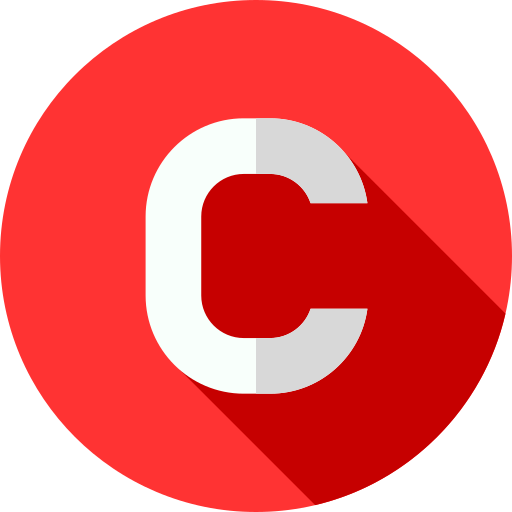Definition of
Domain age refers to the l
Domain Age
ength of time that a domain name has been registered and active on the internet. It is a crucial metric in the realm of website management and SEO, providing insights into the history and longevity of a web domain.
Importance of Knowing Domain Age
Understanding the age of a domain is vital for several reasons. It can influence search engine rankings, provide a measure of the site’s credibility and trustworthiness, and offer historical data that can guide content and marketing strategies. For webmasters, marketers, and SEO professionals, knowing the domain age can be a valuable asset in developing effective digital strategies.
Overview of Methods to Find Domain Age
There are multiple methods to determine the age of a domain. These include WHOIS lookup, online domain age checkers, the Wayback Machine, and analyzing search engine results. Each method has its unique steps, tools, and benefits, making it essential to understand and use them appropriately.
What is Domain Age?
Explanation of Domain Age
Domain age is calculated from the date when a domain name is first registered until the present day. This date is recorded by domain registrars and can be accessed through various tools and services. The older the domain, the more established it is considered in the digital landscape.
Factors Influencing Domain Age
Several factors can influence the calculation and perception of domain age, including:
- Domain registration date
- Transfer of ownership
- Expiration and renewal dates
- Historical website activity
Why is Domain Age Important?
SEO Implications
Search engines like Google consider domain age as a factor in their ranking algorithms. Older domains tend to be seen as more trustworthy and authoritative, which can positively impact their search engine ranking positions (SERPs).
Trustworthiness and Credibility
An older domain often implies stability and reliability, which can enhance the credibility of the website. Users are more likely to trust a site that has been around for a longer period.
Historical Data and Trends
Knowing the domain age helps in understanding the historical performance and trends associated with the domain. This information can be crucial for competitive analysis and strategic planning.
Methods to Determine Domain Age
WHOIS Lookup
Definition and Purpose
WHOIS is a protocol used to query databases that store registered users or assignees of an Internet resource, such as a domain name. It provides detailed information about the domain, including the registration date.
Step-by-Step Guide
- Visit a WHOIS lookup website (e.g., WHOIS.net, ICANN WHOIS).
- Enter the domain name you want to check.
- Review the registration details, including the creation date.
Online Domain Age Checkers
Popular Tools
There are numerous online tools designed specifically to check domain age. Some of the popular ones include:
- Domain Age Tool by Small SEO Tools
- WebConfs Domain Age Checker
- Sitechecker Domain Age Checker
Pros and Cons
- Pros: Easy to use, quick results, often provide additional domain-related information.
- Cons: Can sometimes be inaccurate, dependent on the database used by the tool.
Wayback Machine
Introduction to Wayback Machine
The Wayback Machine, operated by the Internet Archive, is a digital archive of the World Wide Web. It allows users to see archived versions of web pages over time, which can help determine when a domain was first active.
How to Use It for Domain Age
- Go to the Wayback Machine website (archive.org/web).
- Enter the domain name in the search bar.
- Review the earliest archived snapshot to estimate the domain’s age.
Search Engine Results
Analyzing SERPs
Search engine results can also provide clues about the age of a domain. By examining the dates of indexed pages, you can estimate how long the domain has been active.
Identifying Indexing Dates
- Use Google’s search operators to find indexed pages.
- Look for the earliest indexed date to gauge the domain’s age.
Using WHOIS Lookup
What is WHOIS?
WHOIS is a widely used protocol for querying databases that store the registration information of domain names. It provides comprehensive details about the domain, including its creation, update, and expiration dates.
How WHOIS Works
When a domain is registered, the registrar stores the domain’s registration details in a WHOIS database. This information is publicly accessible and can be queried using WHOIS lookup tools.
Step-by-Step Process
- Choose a WHOIS Lookup Tool: Select a reliable WHOIS lookup tool such as ICANN WHOIS, WHOIS.net, or DomainTools.
- Enter the Domain Name: Type the domain name you want to check into the search bar of the WHOIS tool.
- Review the Results: The tool will display detailed information about the domain, including the creation date, registration details, and more.
Tools for WHOIS Lookup
Some of the most reliable WHOIS lookup tools include:
- ICANN WHOIS: Provides official WHOIS data directly from the registry.
- WHOIS.net: A user-friendly tool for quick WHOIS lookups.
- DomainTools: Offers detailed domain registration and historical data.
Online Domain Age Checkers
Overview of Domain Age Checkers
Online domain age checkers are tools specifically designed to quickly determine the age of a domain. They pull data from various sources to provide a concise age estimate.
Top Tools and Their Features
- Small SEO Tools Domain Age Checker: Offers a simple interface and quick results.
- WebConfs Domain Age Checker: Provides additional SEO metrics along with domain age.
- Sitechecker Domain Age Checker: Includes detailed reports and historical data.
How to Use These Tools
- Visit the chosen domain age checker website.
- Enter the domain name in the search bar.
- Review the results, which typically include the domain’s creation date and additional relevant information.
Pros and Cons of Using Online Checkers
- Pros: Convenient, fast, often free to use.
- Cons: Accuracy can vary, depending on the databases used by the tool, and may not provide comprehensive historical data.
Using Wayback Machine
Introduction to Archive.org
The Wayback Machine, part of Archive.org, is a digital archive that allows users to see how websites have looked at different points in time. It captures and stores snapshots of web pages, which can be invaluable for determining the history of a domain.
Benefits of Using Wayback Machine
- Provides historical snapshots of web pages.
- Can show the evolution of a website over time.
- Helps identify the first time a website was active.
Detailed Instructions
- Visit Archive.org: Go to archive.org/web.
- Enter the Domain Name: Type the domain name into the search bar.
- Browse the Snapshots: Look through the available snapshots to find the earliest one, which indicates the approximate age of the domain.
Limitations and Considerations
- Incomplete Archives: Not all websites are fully archived.
- Snapshot Frequency: The frequency of snapshots can vary, leading to potential gaps in the archive.
- Accuracy: The first archived snapshot may not always correspond to the actual creation date of the domain.
Analyzing Search Engine Results
Using Google Search
Google’s search engine results can provide clues about the age of a domain through the dates of indexed pages.
Interpreting Indexing Dates
- Perform a Google Search: Use search operators like
site:example.comto find indexed pages from the domain. - Look for Dates: Identify the earliest dates in the search results to estimate the domain’s age.
Cross-Verification Techniques
- Combine Methods: Use WHOIS lookup, online checkers, and Wayback Machine to cross-verify the domain age.
- Check Multiple Sources: Validate the information from multiple tools to ensure accuracy.
Manual Methods to Estimate Domain Age
Analyzing Content and Links
Reviewing the content and backlinks of a domain can provide insights into its age and history. Older domains typically have more established content and a higher number of backlinks.
Checking Domain Registration Details
Reviewing the domain registration details, including the registrar and registration dates, can help estimate the domain’s age.
Reviewing Historical Data and Records
- Internet Archives: Use online archives to find historical data about the domain.
- Industry Reports: Check industry reports and databases for historical information about the domain.
Factors Influencing Domain Age Data
Registrar Policies
Different registrars may have varying policies regarding data storage and privacy, which can affect the accuracy and availability of domain-age data.
Privacy Protection Services
Some domain owners use privacy protection services to hide their registration details, making it more challenging to determine the domain’s age.
Domain Transfers and Renewals
The history of domain transfers and renewals can also impact the perceived age of a domain. Frequent transfers may reset certain records, complicating the age-determination process.
Best Practices for Accurate Domain Age Identification
Cross-Verification of Data
Always cross-verify domain age data using multiple methods and tools to ensure accuracy.
Regular Monitoring and Updates
Regularly monitor and update your domain age data to keep track of any changes or updates that may occur over time.
Combining Multiple Methods
Use a combination of WHOIS lookup, online checkers, Wayback Machine, and search engine analysis to get the most accurate estimate of a domain’s age.
FAQs on Domain Age
What is the Best Method to Check Domain Age?
The best method to check domain age is to use a combination of WHOIS lookup, online domain age checkers, and the Wayback Machine for the most accurate results.
How Accurate are Online Domain Age Checkers?
The accuracy of online domain age checkers can vary based on the databases they use. It’s recommended to cross-verify with other methods to ensure accuracy.
Can Domain Age Affect My SEO?
Yes, domain age can impact SEO. Older domains are often seen as more credible and trustworthy by search engines, which can positively affect their ranking.
Is it Possible to Fake Domain Age?
Faking domain age is difficult due to the transparency and availability of registration data. However, some manipulations can be attempted through domain transfers or re-registering expired domains.
Conclusion
Summary of Key Points
Understanding and determining the age of a domain is crucial for SEO, credibility, and historical analysis. Multiple methods, including WHOIS lookup, online checkers, Wayback Machine, and search engine analysis, can be used to accurately estimate domain age.
Final Thoughts on Domain Age Importance
Domain age is a significant factor in the digital landscape, influencing SEO, trustworthiness, and strategic decisions. By accurately determining and monitoring domain age, webmasters and marketers can leverage this information to enhance their online presence and performance.
Call to Action for Further Learning
To stay updated on the latest tools and techniques for determining domain age, and to enhance your understanding of SEO and web management, continue exploring reliable resources and stay informed about industry trends.


